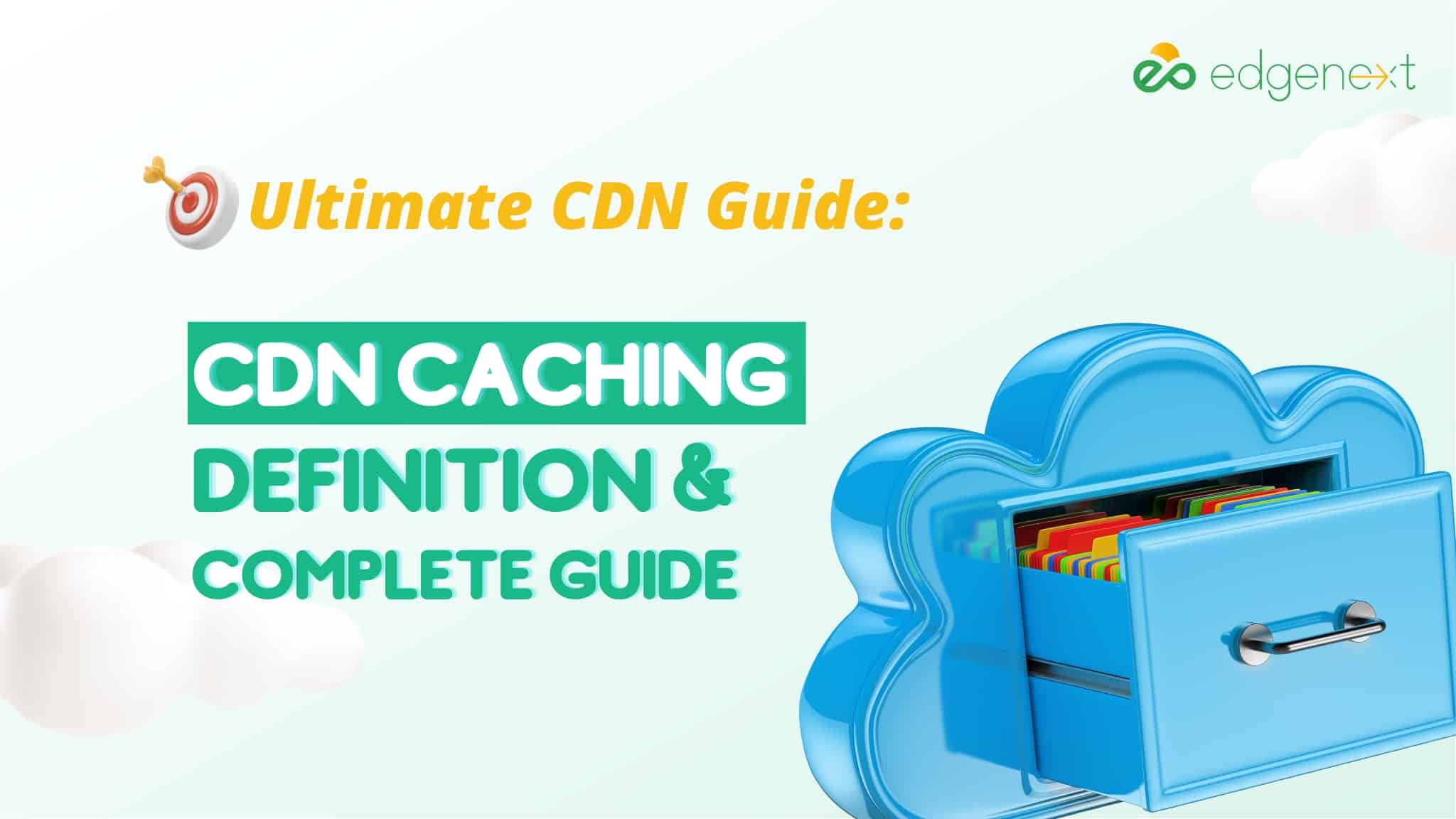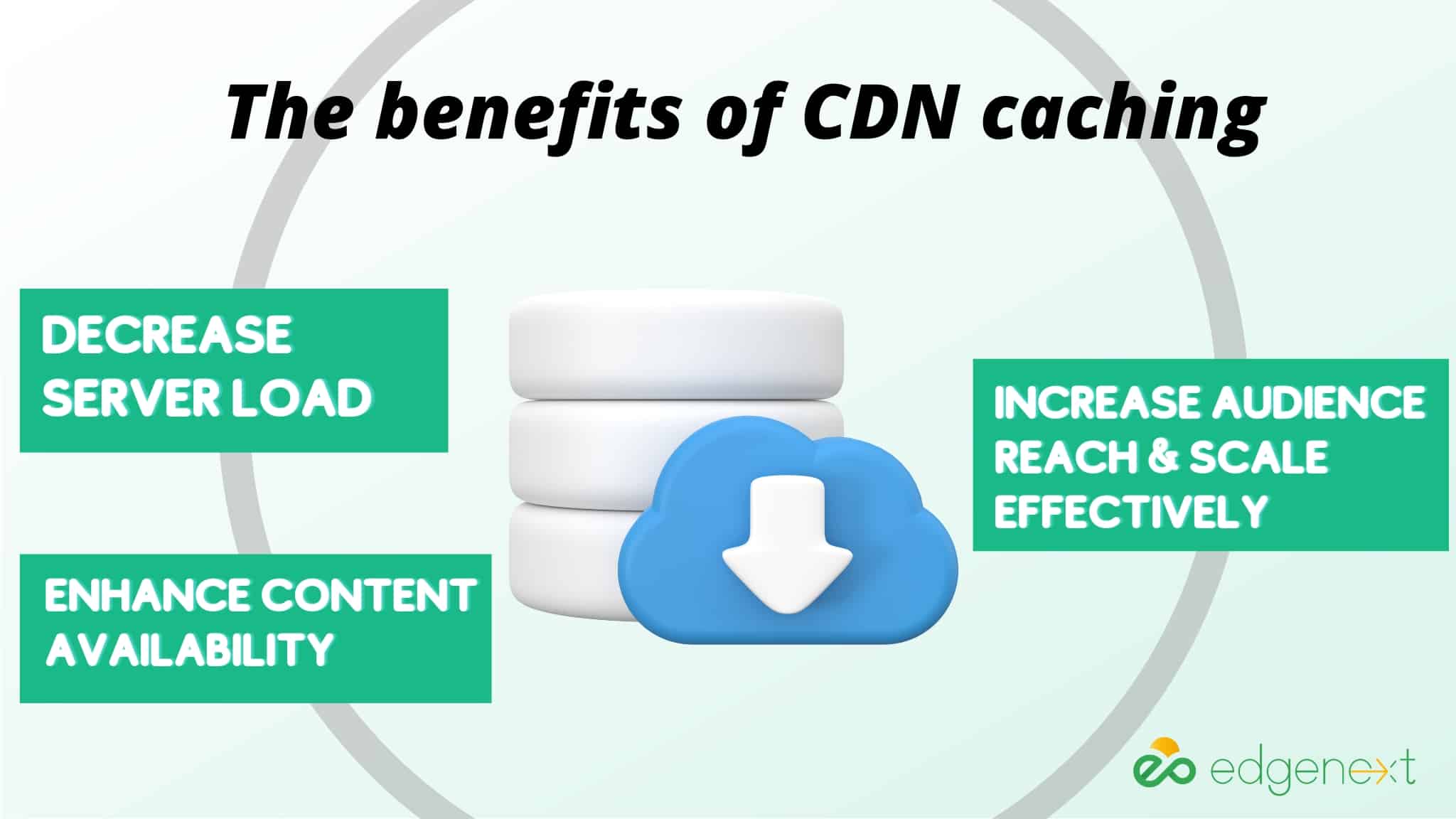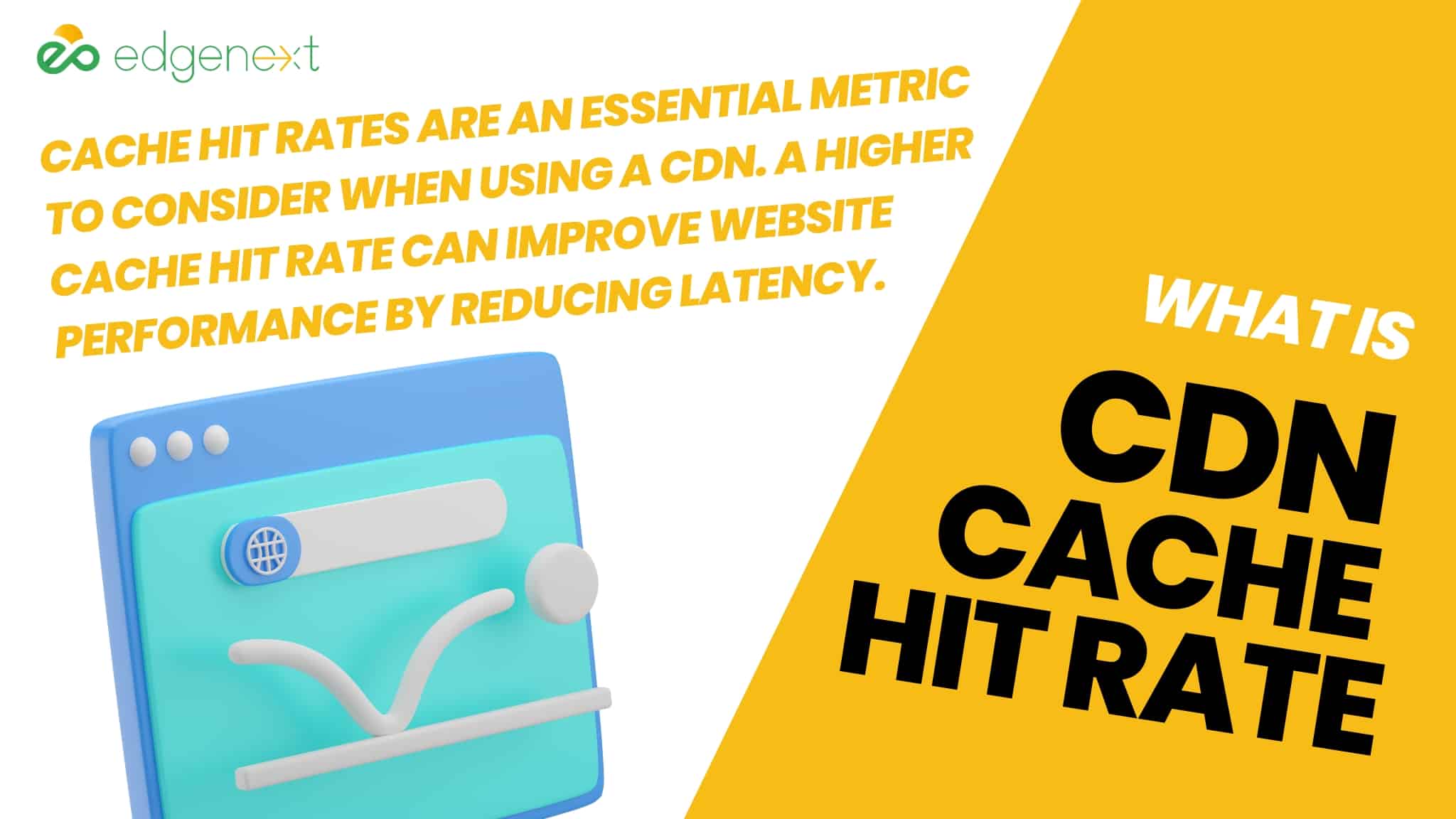
A content delivery network (CDN) is a distributed server system that delivers pages and caching contents to a user based on the user’s geographic location. By caching your website’s resources in multiple locations worldwide, a CDN can reduce the server load time, enhance global reach and scale effectively and scalability, contribute to cost savings by decreasing bandwidth, improve content availability and optimize delivery speed and performance.
CDN caching is the process of storing content on proxy servers that are located closer to end users to ensure that users have faster access to the content they need, reducing the load on origin servers. CDN caching is often used to improve the performance of websites and applications, and it can be especially beneficial for users located far from the origin server. In some cases, CDN caching can also help to reduce bandwidth costs. Cached content stays in the CDN cache as long as users request it. When CDN caching is enabled, subsequent requests for cached content are served from the CDN edge servers until the cached content expires or becomes stale. Afterward, the CDN will fetch the newest version of the content from the origin server and cache it at the CDN edge servers. The goal is to enhance website performance and minimize load on your origin server.
As anyone who has waited for a website to load knows, speed is essential. Web users are notoriously impatient, and even a slight delay can cause them to click away in search of a faster site. Web developers, therefore, strive to ensure that their sites load as quickly as possible, and various caching techniques are employed to achieve this goal. One of the most common caching methods is referred to as CDN caching.
CDN caching stores frequently accessed content on servers closer to the user’s location. This reduces latency and helps to improve loading times. When a user requests a web page, the CDN server will check to see if it has a cached content. If so, it will serve the cached content to the user. If not, it will retrieve the content from the origin server and cache it for future use. In this way, CDN caching can help significantly improve website performance.
When considering a CDN, it is essential to understand the types of caching that can be used to determine which is best for your specific needs.The major type of CDN caching is
Edge caching:
Edge caching is when content is cached at the edge locations closest to the users. This caching can improve performance by reducing latency and offloading traffic from the origin server.

1. Decrease server load
A CDN caching can help decrease origin server load by caching static content close to the user’s location. This decreases the time the user’s browser takes to download content from the server. Static content includes HTML pages, images, CSS, and JavaScript files (can be both static and dynamic).
2. Increase audience reach & scale effectively
By caching static content in different geographic locations, a CDN can also help increase audience reach and scale effectively. When users in other parts of the world request content from a website, the CDN can serve them the cached content from a nearby location instead of sending it from the origin server. This not only decreases latency but can also contribute to cost savings by reducing bandwidth.
3. Enhance content availability
In addition, caching static content in a CDN can also help enhance content availability. For example, if there is an unexpected spike in traffic to a website, using a CDN can help ensure that users can still access the site as long as there is cached content available in the CDN.
Overall, using a CDN can help improve site speed and website performance. Cached content remains in the CDN cache as long as users request it. Once users stop requesting it, the content is automatically purged from the cache.
A CDN cache hit occurs when a user requests content already cached in the CDN. This results in faster loading times as the content does not need to be retrieved from the origin server. A cache miss occurs when a user requests content not cached in the CDN. In this case, the content must be retrieved from the origin server, which can result in slower loading times.
Several factors can influence whether a cache hit or miss occurs. One of the most important factors is how often the content is requested. The more popular the content is, the more likely it is to be cached in the CDN, resulting in a cache hit. Another critical factor is how often the content is updated. If the content is frequently updated, it is less likely to be cached in the CDN and more likely to result in a cache miss.
Overall, cache hits are generally preferable to cache misses as they can help improve website performance by reducing latency. However, both cache hits and cache misses are an inevitable part of using a CDN.

Cache hit rates measure how often users can retrieve content from the CDN cache. A higher cache hit rate indicates that more users can retrieve content from the CDN, which can lead to improved website performance. Several factors influence cache hit rates, including content popularity and update frequency.
One way to improve cache hit rates is by ensuring that popular content is cached in the CDN. This can be done by monitoring web traffic and caching content accordingly. Another way to improve cache hit rates is by minimizing the times content is updated. This will help ensure that cached content remains relevant and increases the likelihood of users being able to retrieve it from the CDN.
Overall, cache hit rates are an essential metric to consider when using a CDN. A higher cache hit rate can improve website performance by reducing latency. However, several factors can influence cache hit rates, so monitoring them and making changes as needed is crucial.
Cache invalidation is the process of removing content from the CDN cache. This is usually done when the content has been updated on the origin server, and the cached version is no longer accurate. Cache invalidation can also remove content that is no longer needed or desired from the CDN cache. There are several reasons why cache invalidation might be necessary. One reason is to ensure that users always have access to the most up-to-date content.
Overall, cache invalidation is a necessary process when using a CDN. It helps ensure that users always have access to accurate and up-to-date content. It also helps to keep the CDN cache from becoming overloaded and impacting website performance.
By leveraging more than 1400 PoPs (points of presence), paid CDN customers can customize how their content is cached and expand their global reach efficiently—looking to improve your website’s performance? EdgeNext can help. Our CDN caching services can help reduce latency and improve website speed. Contact us today to learn more about how we can help you.
© 2025 EdgeNext Copyright All Right Reserved